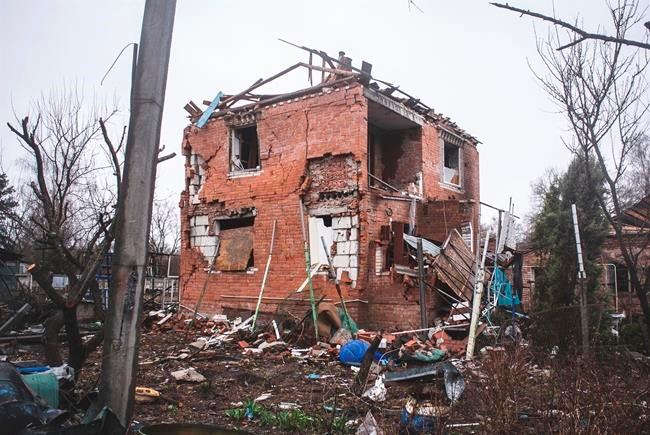OTTAWA — Retired general Rick Hillier is lamenting what he sees as waning Canadian interest in the war in Ukraine as public and political attention turns increasingly toward the rising rate of inflation and other issues closer to home.
But the former Canadian defence chief who served as the face of this country's military mission in Afghanistan for years warns that even more economic hardship is in store if Canada and its allies don’t step up their support for Ukraine and stop Russia.
That includes the rapid provision of hundreds of millions of dollars in Canadian military aid that the federal Liberal government promised in April, only a fraction of which has been delivered.
“Just imagine what would occur if Russia breaks through and takes Ukraine, changes the oil and gas flow dramatically, changes the flow of wheat into Africa, to the Black Sea ports,” he said in an interview.
“The implication will be double, triple or quadruple what we see right now. … It’s right to do more as a nation and we can afford to do more. But secondly, do it because the economic implications down the road of not doing it are brutal for us also.”
Hillier was speaking in his role as the new head of an advisory council comprised of retired military commanders organized by the Ukrainian World Congress, an advocacy group for the Ukrainian diaspora.
The UWC has been running a campaign called Unite With Ukraine that seeks to raise funds to buy non-lethal military equipment for the country’s Territorial Defence Force, which is comprised of volunteers — including foreigners — fighting Russia’s invasion.
Canada has been a staunch supporter of the Ukrainian military since Russian forces first attacked in late February, with the Liberal government promising $500 million in military aid in April's federal budget.
The government says it has since provided more than $150 million worth of assistance, including millions in artillery shells, drones and satellite imagery. Those are in addition to the provision of four artillery guns and several armoured vehicles.
Defence Minister Anita Anand earlier this week held up the purchase of drone cameras for the Ukrainian military as one of several recent successes when it comes to military procurement, saying the government “turned around a contract within days.”
But Hillier says there needs to be a greater sense of urgency as Russia, after its early battlefield blunders, has started to deploy more of its military capabilities in ways that the Ukrainians are finding difficult to counter.
“They’ve committed half-a-billion dollars and I’d like to see that money spent in very effective ways, with things delivered to the Ukrainian defence forces literally right now, and not go through a procurement process,” he said.
“Let’s get them what they need right now.”
Hillier repeated some of his past calls for Canada to send some of the hundreds of light-armoured vehicles that form the backbone of the Canadian Army’s mechanized power, as well as dozens of tanks.
At the same time, he worried that the war in Ukraine is falling down the priority list for Canadians as they face more pressure on their pocketbooks due to rising fuel and food costs as well as mortgage rates.
“I watched a variety of national news shows over the last days and several weeks and Ukraine is barely mentioned, let alone what’s occurring there,” he said. “And people are worried about their ability to put food on their table, and their jobs and house.”
Hillier’s comments came as the Russian military extended its grip on territory in eastern Ukraine on Thursday, and the Ukrainian military announced the arrival of powerful U.S. multiple-launch rocket systems it hopes will offer a battlefield advantage.
The U.S. plans to send another US$450 million in military aid to Ukraine, including some additional medium-range rocket systems, ammunition and other supplies, U.S. officials said, speaking on the condition of anonymity to provide details ahead of an announcement.
Analysts said the advanced systems, which Canada does not operate, would give Ukrainian forces greater precision in hitting Russian targets.
This report by The Canadian Press was first published June 24, 2022.
— With files from The Associated Press.
Lee Berthiaume, The Canadian Press


